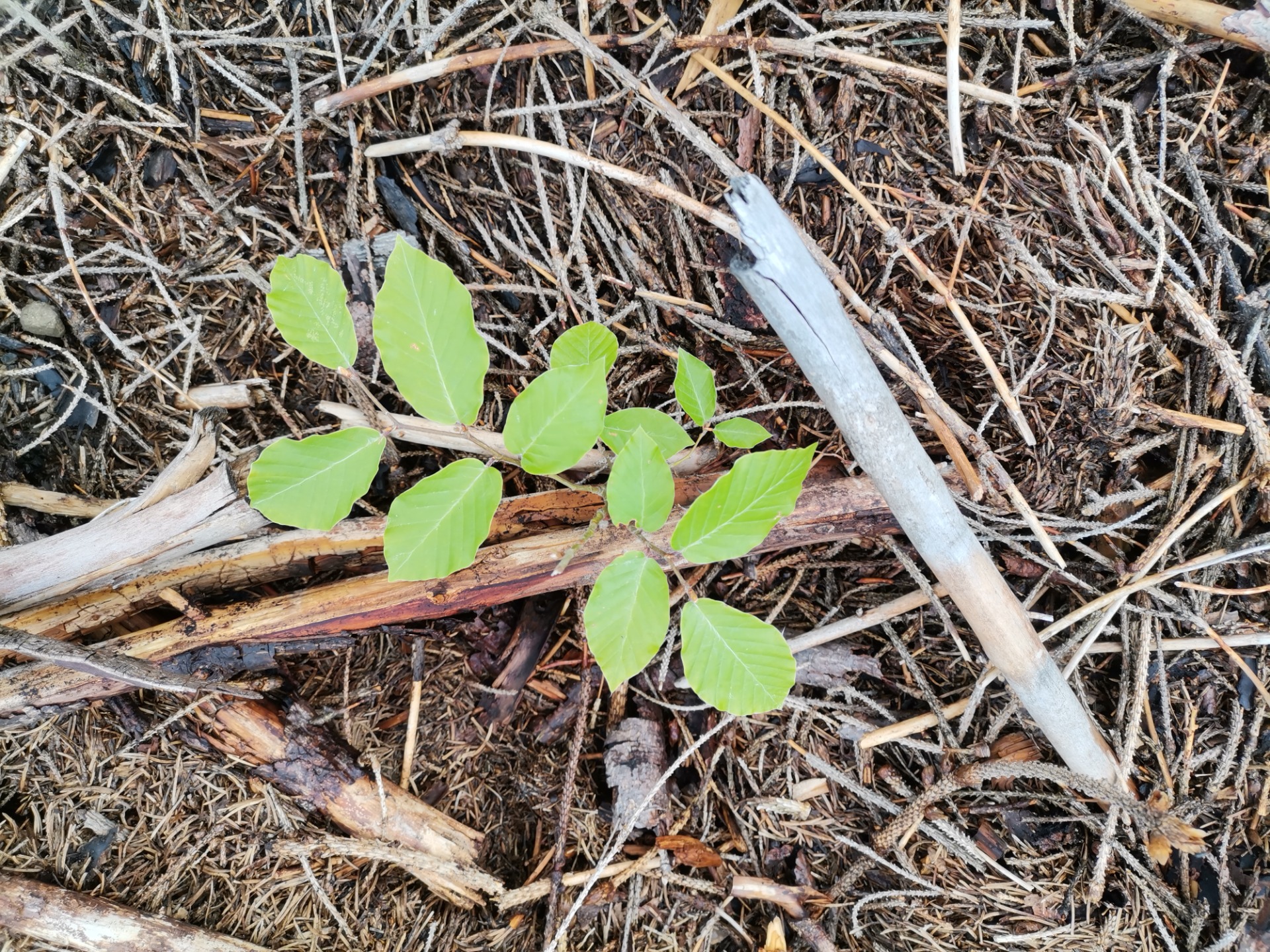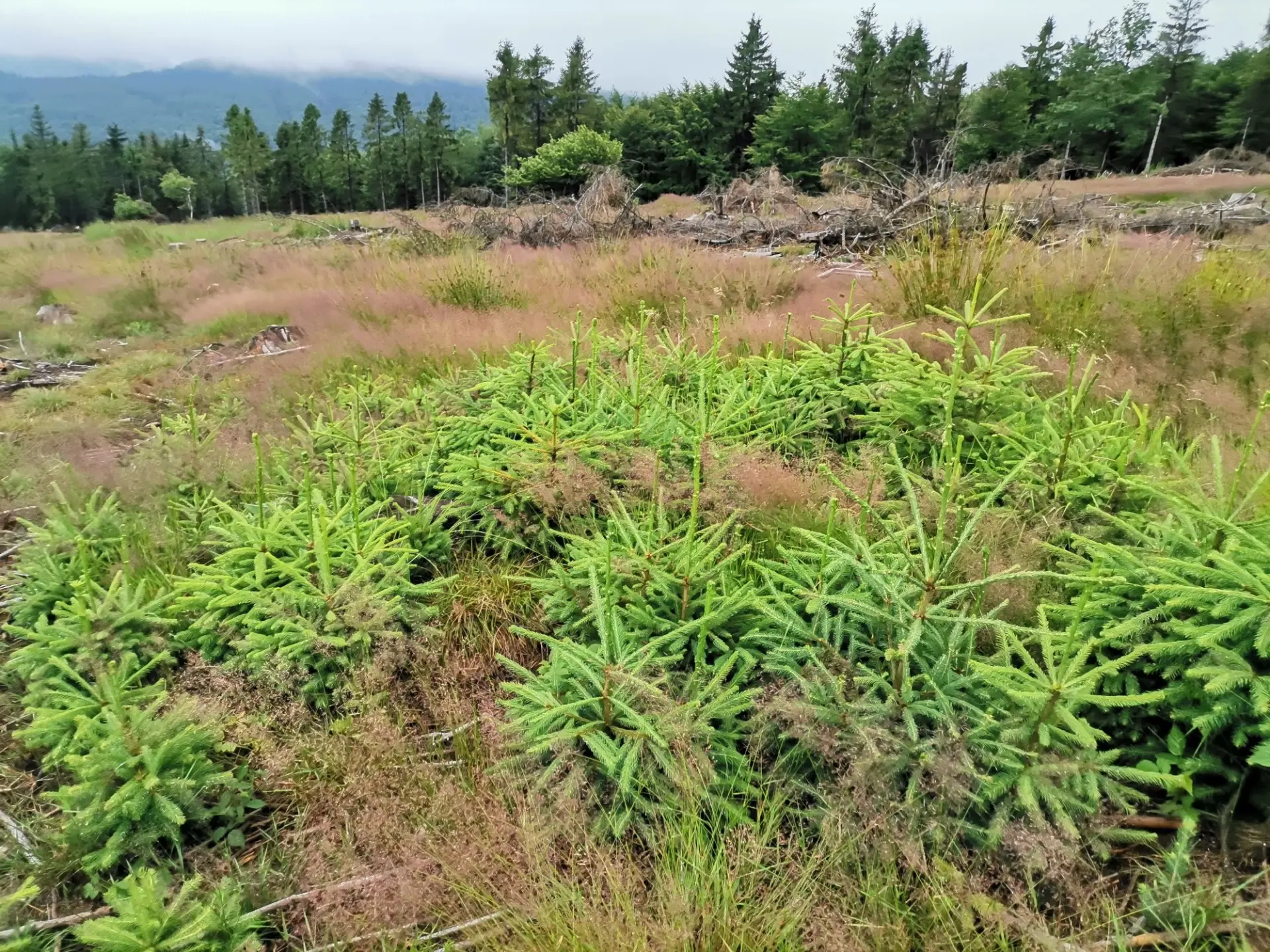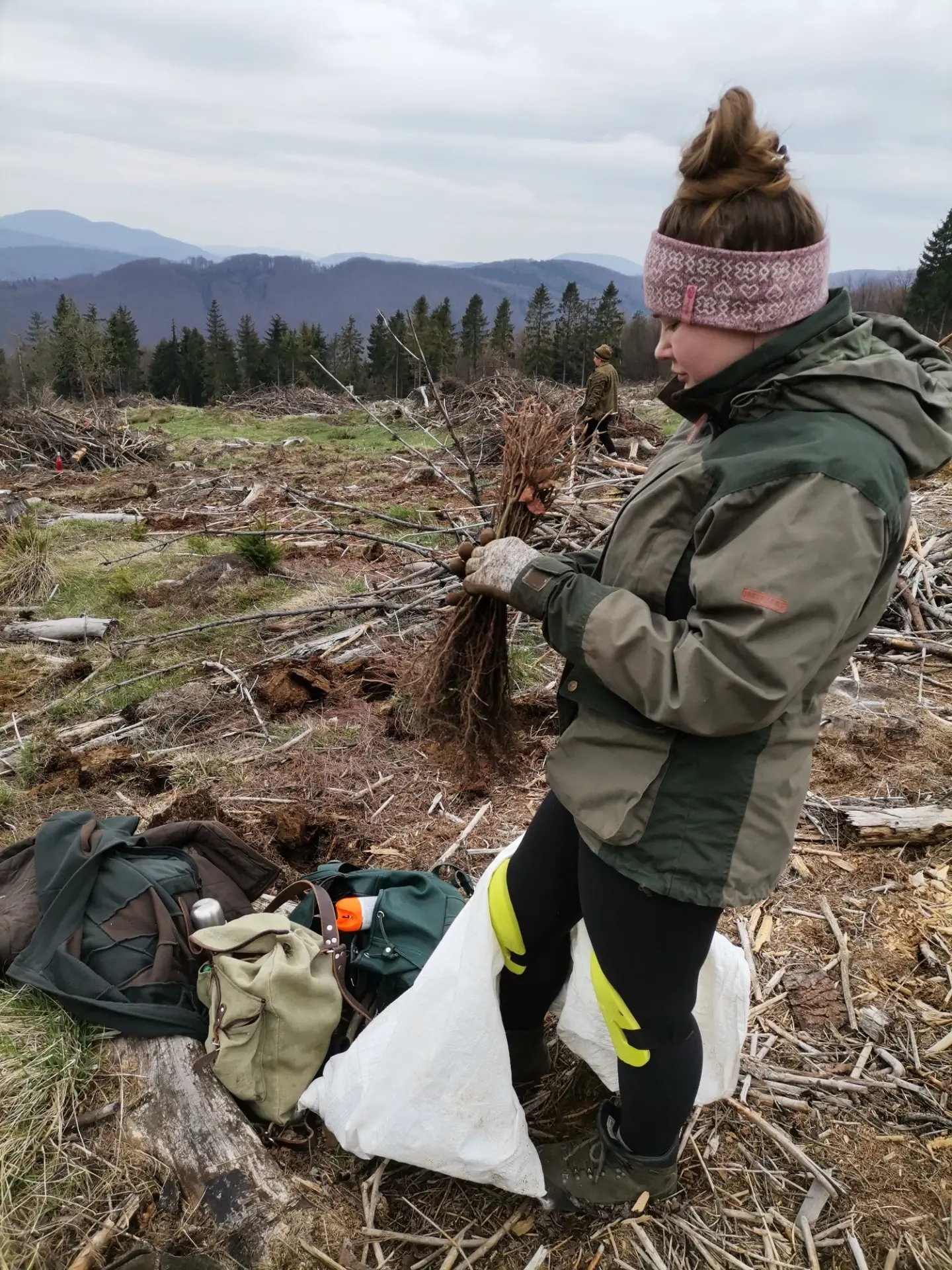Afforestation
Spring 2023 was marked by ideal conditions for reforestation. As part of a project to draw non-repayable financial contributions for a private entity whose forests are under our expert management, we planted 11,000 seedlings of European beech. The seedlings were planted in areas previously occupied by non-native spruce stands, using hole planting with the help of a soil auger. Thanks to the ideal weather and planting technology, the survival rate of the seedlings in the first year was between 90 and 95%.
Despite this success in the cadastral area of Regetovka, there are still many areas that will need to be reforested or improved as part of the project to revitalize the deceased spruce stands. Despite the strong pressure from wildlife, we will work in collaboration with the landowner to create diverse forests for future generations – even at the cost of building small fences.


Afforest or not ?
In recent years, despite the generally positive public opinion on artificial forest regeneration, we have also encountered views that point to the senselessness of artificial planting in forests. From an ecological perspective, natural forest regeneration is, of course, the most suitable approach. However, in the area we are dealing with, it is a combination of conditions under which, regardless of the legal obligations of the forest owner, a gentle human intervention is justified.
The areas subject to afforestation were previously artificially reforested pastures, from which fertile soil horizons were mechanically removed during reclamation work in the 1970s and 1980s. The soil conditions are characterized by significant secondary acidification (so-called acidic cambisols). The site in the cadastral area of Regetovka is also specific for its higher precipitation totals, which cause nutrient leaching. The presence of extensive open areas is also due to the site being characterized by the occurrence of blueberries and heather, which significantly slow down the natural successional development through their competition.
Specific conditions
These conditions therefore require management in the form of underplanting and local artificial reforestation with beech, valuable broadleaf trees, and fir, with the aim of restoring forest functions as quickly as possible. Possible deforestation, which of course has its justification within the landscape structure, will only be accepted in heavily waterlogged peatlands. In open areas, we expect the emergence of natural regeneration of the next generation of spruce, larch, and pine, with pioneer species such as birch and rowan forming the most important element in the area due to the need for soil enrichment.
Instead of the original spruce monoculture, the future young forest should consist of at least 8 species of trees, from which natural processes will subsequently select the most suitable ones.
